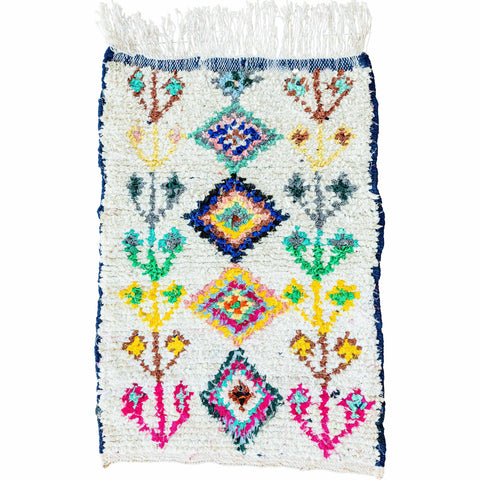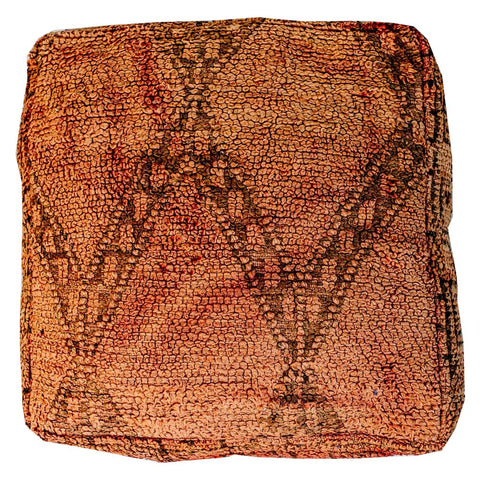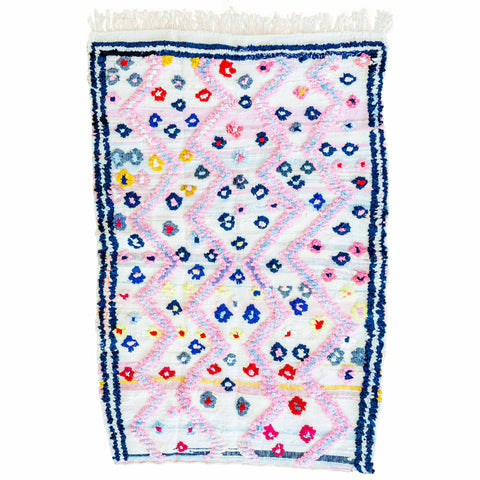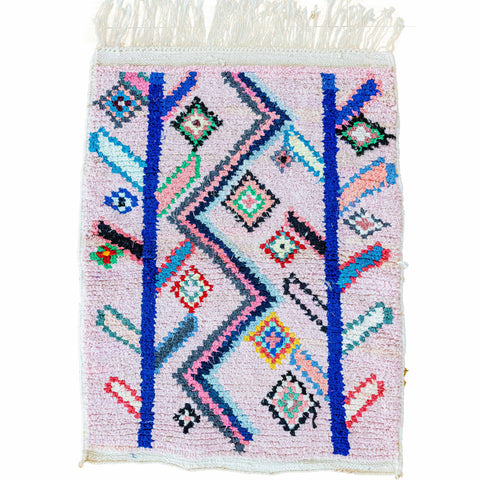What is Moroccan Style Decor? – Everything You Need to Know

Crafted by Berber artisans. Curated by decor enthusiasts
Can you imagine waking up to bold colors, engaging patterns, and comforting textures? That is what Moroccan style is all about.
While it looks complex to master, it’s pretty easy to achieve by adding a few simple things to your home. You can do this in a few minutes. I’ll show you how.
What is Moroccan Style?
Merriam-Webster defines Moroccan style as “one characteristic of an individual, period, school, or nation.” The fashion industry uses style to categorize current trends or start new fads. This influences all other areas, including home decor.
Moroccan style is a blending of history and traditional artistry. It is a commitment to handmade. Everything made in Morocco is different and special. Artisans make each item, one by one, by hand.
The combination of history and traditional craftsmanship is what has become Moroccan style.
It is so iconic that it has caught on in popularity throughout the world. This decorating trend comes from Moroccan and Moorish architecture. The indoor gardens and courtyards of riads in Marrakech also have a major impact.
What is Moroccan Style Décor?
Moroccan style décor features lush carpets, mosaic tiles, warm lanterns, and rich colors. There is nothing boring about it. The entire home brightens up with even a few hints of Moroccan style décor added.
Is Moroccan Decor Always Made in Morocco?
Real Moroccan home décor is made in Morocco. But people use Moroccan style to describe anything that looks like it came from Morocco.
Many items labeled “Moroccan style” are not made in Morocco. Manufacturing in mass quantities inside a factory is the true reality.
When you see “Moroccan-inspired,” it has a similar meaning to “Moroccan style.” They are products made using Moroccan design inspiration. It does not mean artisans made them in Morocco.
The price difference can be a good way of knowing if it is a one-of-a-kind item from Morocco or a mass-produced copy. A higher price indicates it is the original. A low price shows it is a copy of the original. It is a similar difference between an original oil painting and a print in the art world.
Most people want unique art because it retains a higher value. Others are okay with a copy or print because it is a way of appreciating art that fits their budget.
Moroccan Influences
Where did Morocco’s distinctive style begin? Through the influences of many conquests of the country. It is an innovative conglomeration of designs from Islamic, French, and Spanish taste. These three different cultural areas have affected Moroccan design the most.
Islamic Architectural Influences
Design in the Islamic world is very elegant and well-defined. You will notice this showcased in palaces, mosques, and tombs. Morocco adopted many of these new ideas. Tiles, fountains, geometric patterns, and floral patterns are in use everywhere.
Tile Patterns and Colors
The famous tiling in Morocco comes from the Persian tiles of the Arabs. It is a way of making surfaces attractive. Early tiles on floors and walls were blue and white. Green came into the picture later with Roman tile. Morocco took those concepts and changed them to make their own.
You can now find Moroccan tiles decorating any surface in a wide range of colors. Moroccan mosaic tiling, called “zellij,” is in high demand. Morocco is the only place to showcase so much variety of color and patterns in the Arab world.
Fountains
Water is a symbol of paradise and seen as a gift from God in Islam. The building of public fountains was to ensure people had a source of clean water at all times. Over time, these fountains have become more and more decorative. You can still see them today in public buildings and private homes.
Geometric Design Patterns
Tastir (geometric) patterns used throughout Morocco are breathtaking. Repeating geometric patterns called “arabesque” is the symbol of eternity. In Islam, it prompts meditation on the eternal nature of God.
Floral Design Patterns
Another pattern that emerged is floral patterns, called “tawriq.” Islam does not encourage the portrayal of animal figures or humans in art. So, beautiful geometric and floral patterns are the replacements
Tastir And Tawriq Patterns
Both tastir and tawriq patterns are on surfaces everywhere, using almost any material. The most popular materials are tile, wood, and stucco. It is not uncommon to find both patterns used together on floors, walls, and fountains. They can be cheerfully mixed and matched.
Spanish Architectural Influences
Moroccan design has also had influences from neighboring Spain. They both share a passion for bold color and decorative detail. Morocco housed refugees from Spain in the 1500s. This brought roof tiling, horseshoe arches, and cusped arches.
Roof Tiling
The overlapping roof tiles are handmade and hand-glazed. This gorgeous roof jewelry is a Spanish tradition adopted by Morocco. It defines and harmonizes the urban landscape with distinction.
Arches
The famous arches used in buildings and Morocco houses also came from Spain. Cusped arches have circular shapes made of foils. Horseshoe arches look like the shape of a keyhole. Pointed, rounded, or lobed are the main design features.
This type of arch is so distinctive in Morocco and Spain that it is often referred to as the Moorish arch.
French Architectural Influences
The French protectorate of 1912 helped establish building standards. It also maintained control over a big real estate boom. This also helped to protect Morocco’s irreplaceable architecture, design, traditions, and culture.
The purpose was to promote more tourism. The French made rules for new construction that included the following:
- Buildings can only be 4 stories high
- A courtyard or garden must be 20% of a building’s area
- No balcony can overlook a neighboring courtyard
- For privacy, doors cannot face each other across the street
- All roofs must be flat
The French also created new cities on the outskirts. A government overseer appointed to develop each city ensured they had the following:
- A central urban area
- Designated areas for commerce
- Administration
- Industry
- Elite homes
- Blue-collar worker homes
New public parks and wide streets lined with buildings followed specific rules. What is fascinating is that the French used these new cities to experiment with modern art deco.
Today, Moroccan architecture combines both the old and new in exciting ways. This has changed home décor styles in other countries, influencing the UK and the United States the most.
What is Moroccan Style Decoration?
The best way to describe Moroccan style decorating is through layering. It is overlapping architectural shapes, decorative finishes, vivid colors, and intricate patterns. The grand finish is adding in one-of-a-kind objects.
An easy way to use this technique in your home is to layer textures, colors, patterns, and a variety of shapes.
Some of the most common home décor uses are:
- Decorative flooring using tiles or a Moroccan style rug
- Wall décor using mosaic tiles, stenciling accent walls or hanging Moroccan rugs
- Hanging lanterns from the ceiling that cast patterns on the walls
- Stencil or wallpaper ceilings using high-contrast large patterns
- Apply ceiling plaster medallions imitating geps or use a wood strip lattice pattern
Do not be afraid to use bold colors and combine floral and geometric patterns together. The fastest and easiest way to do this is by using Morocco accent rugs. They are not permanent and moved around freely for experimentation.
Moroccan Decor Style Summarized
The keys to Morocco style include layering color, patterns, textures, and objects. The true heart of decorative art in Morocco is a focus on originality. Islamic, French, and Spanish influences played a major role. But Morocco combined them all to create their own exceptional style.
Add a Coco Carpet or Decorative Pouf
By the way, did you know Coco Carpets has a big assortment of handmade Moroccan style décor? These one-of-a-kind art pieces from Morocco bring joy-filled life to your home.
If you don’t have time or feel afraid to make major changes, then add a simple Moroccan area rug or decorative poufs. The lush texture brings in so much warmth.
Back to you, what do you love about Moroccan style? What are your favorite ways of using Moroccan inspired decorating? Leave a comment sharing your best wins below. I can’t wait to hear from you!


































